Life on the PWHL Reserve List: Navigating the League’s System for Non-Roster Players
Minnesota Frost's Lucy Morgan and Ottawa Charge's Sam Isbell chronicle the ins and outs of the PWHL reserve list.
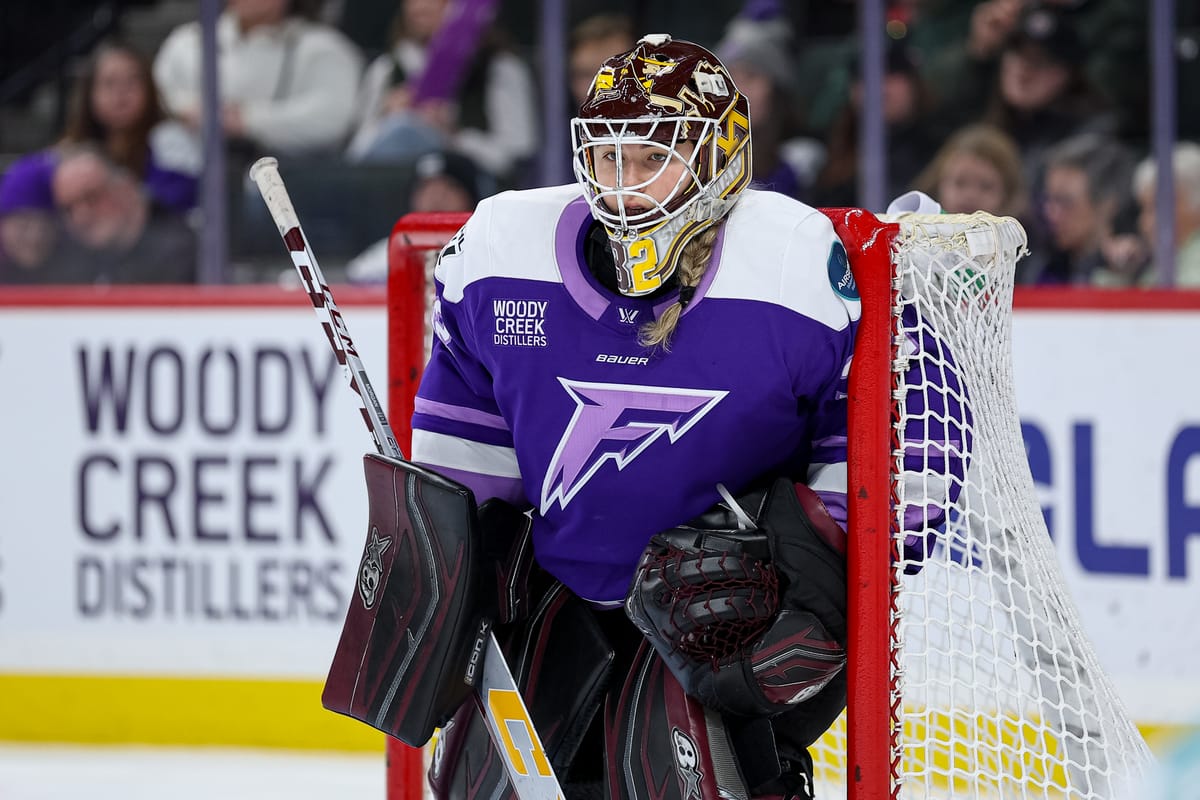
Music was blaring and chatter filled the Minnesota Frost locker room on a Saturday afternoon.
Lucy Morgan couldn’t hear a thing. The 23-year-old rookie goaltender popped in her AirPods and tried to dismiss the eyes looking at her from around the room. Was she or was she not starting for the Frost? She asked her captain Kendall Coyne Schofield, who attempted to get an answer. No one had told Morgan anything as of yet. She had been mentally preparing herself, as a third-string goalie, to never play, and now she was either on the brink of making her debut or still far from it.
When Coyne Schofield came back and gave Morgan a look, she knew.
“I forgot it was my first game. I didn't think, ‘Oh my God, this is my debut.’ I’m just like, ‘holy s–t I'm getting the first opportunity in the history of the PWHL for a third-string goalie. I better not f–k this up.’”
That’s the life of a reserve player in the PWHL. One minute you’re wondering if or when you’ll play and the next you’re hitting the ice months into the season for the first time. Morgan, along with Ottawa Charge defender Sam Isbell, share their experience of life on the PWHL reserve list, what the experience is like for them, the ways they adjust both mentally and physically to playing, and the changes they would like to see made overall.
Each of the six teams in the PWHL is allowed to sign 23 players to contracts, with three additional players signing on as reserves. So 18 players across the league train with their team but do not get to travel and cannot play in any games until they are signed to either a 10-day contract or a contract via an injured player being placed on Long-Term Injured Reserve. That qualifies a reserve player for a Standard Player Agreement contract for the duration of the injured players' absence. Reserve players can also be signed by any other team in the league, not just the one they initially signed on as a reserve with. It’s a side effect of the PWHL’s infancy and of the lack of a minor league system. But both Morgan and Isbell are understanding of how the system works.
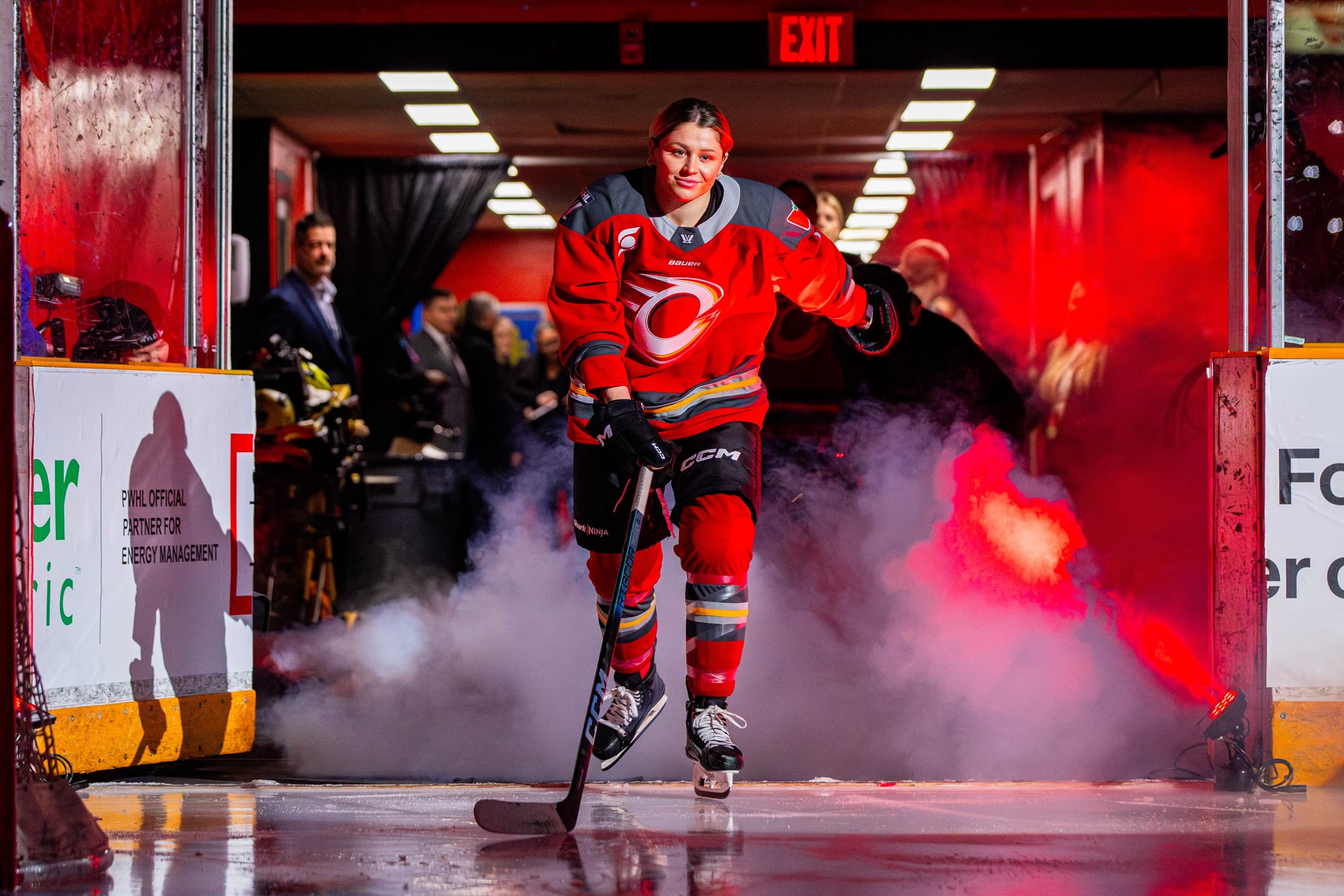
Isbell knows her way around the reserve list well. The second-year player spent her first year in the league signed as a reserve with Boston, where she managed a 10-day contract for her first PWHL game play. She then signed another 10-day contract with Ottawa in March after a late player injury and has remained there since. The 26-year-old said she’s used to the process and knows what to expect.
Since reserve players can get picked up by any team in the league, the possibility of training with a team but then getting signed to a contract with another is not unheard of. It is something that Isbell doesn’t think about often, even though it happened to her last season. “I try to go into my job every day the best I can and hopefully get a spot on my squad,” she said. “But I mean, it's definitely not worst case scenario if you can get picked up and get a job somewhere else. It’s kind of how the game goes.”
Her days on reserve involve workouts and training as chronicled on her YouTube channel. Some of that training is done with the other Ottawa reserves if the team is away on the road. But that doesn’t mean Isbell feels less than; she feels she’s just as much part of the team on reserve as she is when signed to a contract. “You still have a presence on the team, whether it's on the ice or off the ice. Everybody has a role on the team, whether you're playing ten minutes a night or 25 minutes a night,” Isbell explained. “I know my role and I know what I can bring to the table… showing up and doing what I’m able to do [and] what’s going to help the team win.”
Isbell feels that knowing her strengths put things into perspective after last season. She makes sure she is always ready to play given that anything can happen in a game or in practice. Living in Ottawa allows her to be able to train with the team and reserves every day too. Remaining ready and focused allows her to show her abilities on the ice. It is something she believes can lead to more opportunities. “My mindset going into it is ‘I worked hard for this, I know what I'm doing, go out, have fun and do the best you can because that's really all you can do at the end of the day.”
Isbell signed a 10-day Standard Player Agreement on Jan. 6 and made her season debut the following night. Getting the call from reserve was exciting, she said, and she was super pumped to join the team. What she enjoys most, she shared, is being around the team and being given the chance to play. Her focus was on getting past the nerves and having fun but also putting into play what the team has been practicing on the ice. Isbell was happy with her performance after not playing since last season and praised her team for how they played.
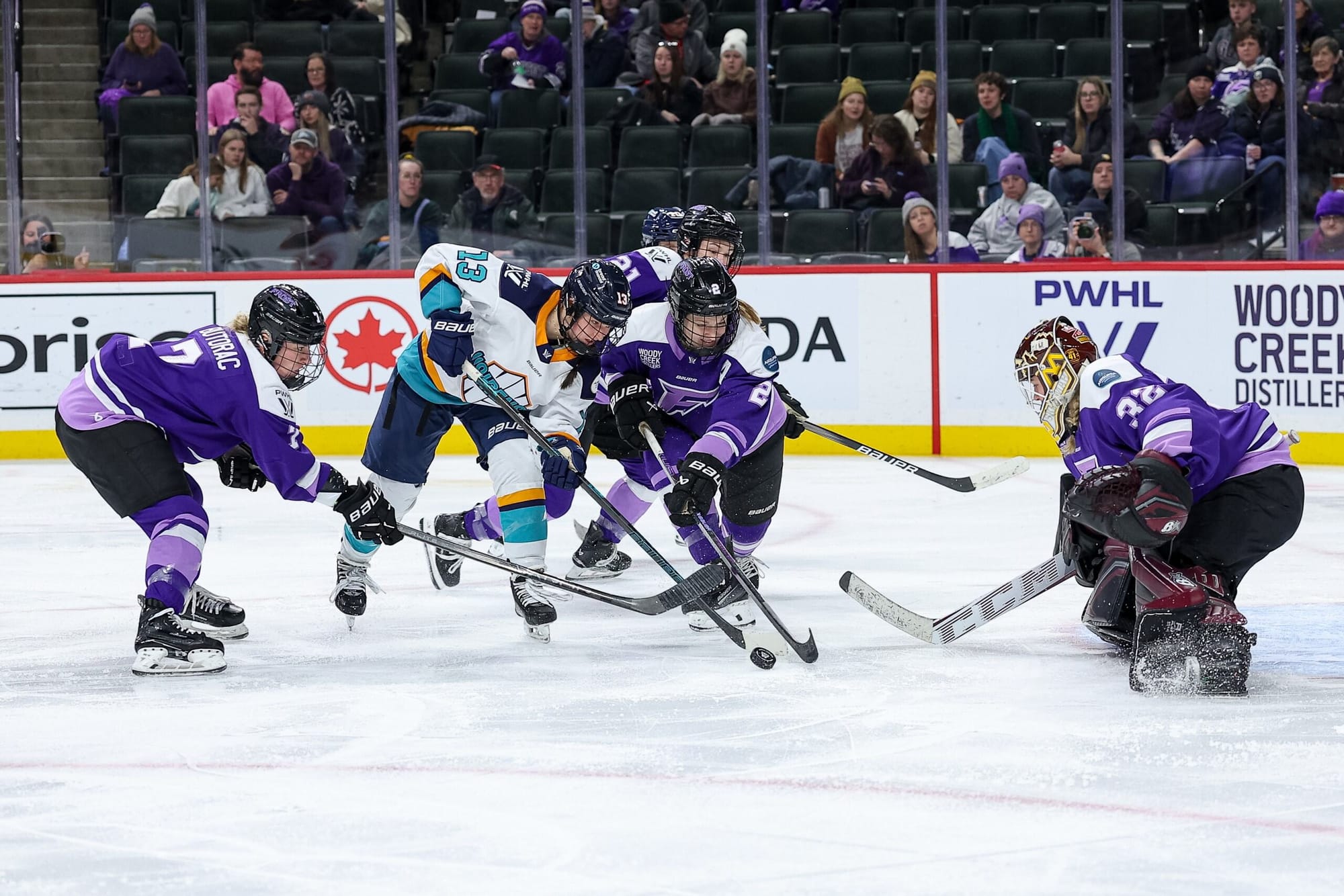
Morgan signed a 10-day SPA days before she made her debut. It was amidst a 30 second conversation in an elevator with head coach Ken Klee that she found out she was getting signed. The Frost goaltenders had been dealing with illness and were in and out of practice. Nicole Hensley had finally returned and was ready to go for the Frost’s game against the Sirens, but she suffered an injury during warm ups, which led to Morgan’s sudden PWHL debut. Morgan saved 29 shots and gave up five goals in a full 60-minute outing.
She didn’t have time to dwell on her performance. But she still wishes things had gone differently for her, especially as a third-string goalie in a league where few have made it to this point and where, she believes, even fewer will be able to next season. “If you're not a starter in this league it’s like there's no room for error, which is fine because I like cutthroat things actually, but it sucks sometimes,” Morgan admitted. “I understand why the league is cutthroat: six teams, all the starting goalies are Olympians. It should be that way. But including my feelings, it kinda sucks that I probably won't get another chance to make up for it.”
Though Morgan is in her first pro season of hockey and in her first experience with the PWHL’s reserve system, she felt prepared for this season because of all the adversity she faced to make it to the pros. She was a walk on at St. Lawrence, then became a starter, and transferred to the University of Minnesota for her fifth year. She is used to pushing past negative feelings, such as others not believing in her abilities, because she knows how to overcome it through believing in herself and not relying on others to believe in her. That experience, she said, is what helps guide her through uncertain times.
“You kind of know what to expect in a way. I know that I can take this adversity and weather the storm,” Morgan said. “Believing in yourself and not listening to anybody is something that I say is my North Star and it's sometimes hard but you just gotta stick it out.”
Each player found a way to adjust when signed off the reserve list and to enter a game. Normally Morgan would mentally prepare for a game by envisioning herself making saves and tapping into a mindset that she calls her “killer mentality.” But for her debut, she couldn’t get to that state, and instead felt as if she had been electrocuted and felt herself “buzzing.” It was a feeling she said was then replaced with a sense of calmness and readiness she normally didn’t experience.
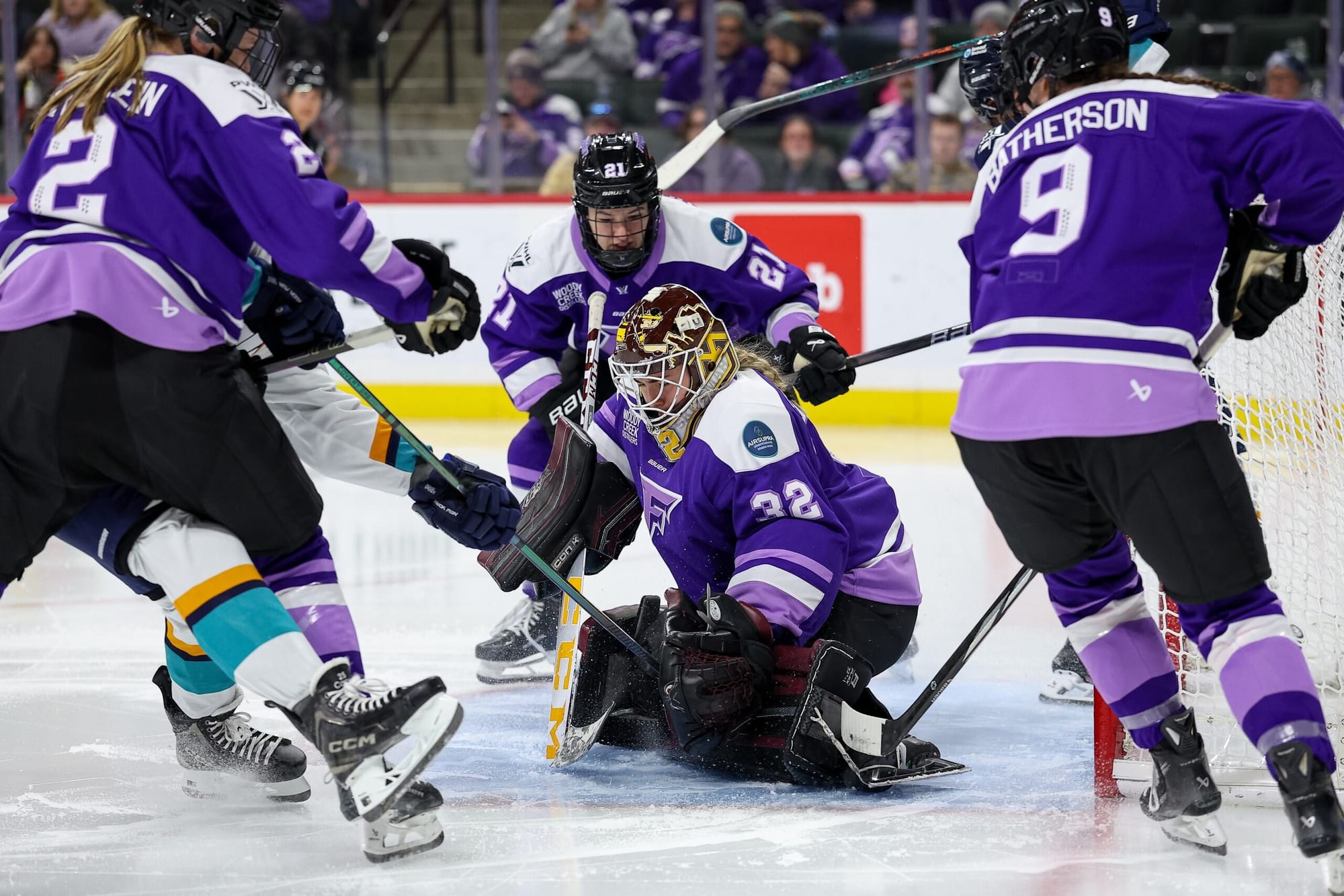
“I just channeled [the killer mentality] and was like ‘I got this’. Almost like delusional confidence,” Morgan explained. “That's all I need, and it works, I mean I didn't get nervous. I felt ready for the game.” While mentally she was caught off guard, physically she was ready to go. She said it was luck that allowed her to be in game shape for her PWHL debut. If it had been the week prior, she wouldn’t have felt ready to go but with both Frost goalies dealing with injury or sickness, it allowed Morgan to fully participate in practice. The endurance she went through during that time prepared her for actual game play. “If I didn't have that, I would have been ready. I think I can get my crap together last minute,” Morgan said. “But it definitely helped having only two goalies leading up to the game so that I get more reps and conditioning.”
Unique challenges have also come up for Morgan as a third-string goalie. While she is able to practice with the Frost, she makes sure both goaltenders get the most reps in practice over her. Morgan still needs to find a way to stay in shape but also improve in areas she needs to. Her most viable solution, she said, is to schedule one-on-one goalie sessions on her own, so that if she does get called up to play again, she can feel confident in her abilities.
Isbell has mentally prepared for getting the call up from reserve by fighting off the negative thoughts that could arise, such as the fear of not knowing, as a player on reserve, how much she is going to play or where she is going to play. But she knows she can stop those thoughts in their tracks by reminding herself how much she has trained to get to this point and by having confidence in herself and simply making the best of any opportunity she can get.
Whenever Isbell doesn’t feel her best, the Charge can lend a hand. It’s one thing to be ready physically, but it’s another to be prepared mentally for all hockey throws at a player, and that’s where discussions with a mental skills coach have made a difference. “We focused on what we can control and letting go of what we can't,” Isbell explained. “You might make a mistake in a game, but that's not defining you and your career and what you've worked so hard for. It's a moment in the game and hockey's a game of mistakes.” While the ability to integrate positive self-talk is useful for Isbell, she also believes good mental preparation can help give her an edge on the ice too.
Both players understand that a minor league system can’t be created instantaneously. But with new players becoming available from college and other pro leagues overseas, the field is only going to get more crowded if the PWHL continues with 23 rostered players and three reserves for each team. Isbell understands having a smaller pool of players leads to the best product, but she also believes that a minor league system would allow less players to be left out of playing opportunities. “As the league grows, there's going to be a need. There's probably a ton of amazing hockey players that hung up their skates after the league was created because there's just not enough spots,” Isbell said. “With the amount of injuries that we're seeing every day, There is a need to have more players ready to go. But I think that's something that's also going to develop as the league moves forward.”
One solution could be with the Swedish Women’s Hockey League, also known as the SDHL. Both players agree it is the closest to a feeder league the PWHL has. A minor league system in closer proximity is something Isbell said could be helpful for the league because it would give players the chance to play while waiting to get a callup to the PWHL. But Morgan sees the difficulties with that being a possibility. “SDHL needs a minimum of [a] certain number of [Swedes] because it's like their development program. Now you have 15-year-olds in basically our AHL,” she explained.
There is also the obstacle of deciding whether to play in the PWHL or SDHL. The two leagues intersect closely when it comes to important dates. The PWHL draft takes place in early June while the SDHL’s season begins in July, forcing a player to make the decision of where to play prior to the PWHL draft, Morgan said. But she hopes for a partnership between the two leagues at some point, even if she isn’t sure it will happen.
There are changes Isbell and Morgan would like to see made in the meantime if a partnership with the SDHL or a minor league system can’t be developed soon. Isbell said she would like the rosters to expand to include more players including scratches – similar to the NHL – who can quickly draw into a game without the need to sign a contract which is currently the process with reserves.
Another change involves the pay, which Isbell said she knows has affected some players, especially those on teams in areas that are more expensive to afford. Morgan shared a similar sentiment. She said eliminating reserves and expanding the rosters from 23 to 26 would be a good option especially because of the implications of being a reserve player.
“Maybe not for my situation, but for the other two reserves, they've been getting pretty good shifts, not like crazy minutes, but they've been working themselves into the lineup,” Morgan explained. “Once people get healthy they're gonna get demoted… and can't play a game anymore. If there's no feeder leagues, then you should by default have a bigger roster.” Morgan also said she understands a minor league system would not be feasible now since the PWHL is still new. But she is thinking about the future and believes an expansion of at least two teams would help out the league and its players now, especially with the new wave of college 5th years and seniors who will be hitting the market this spring.
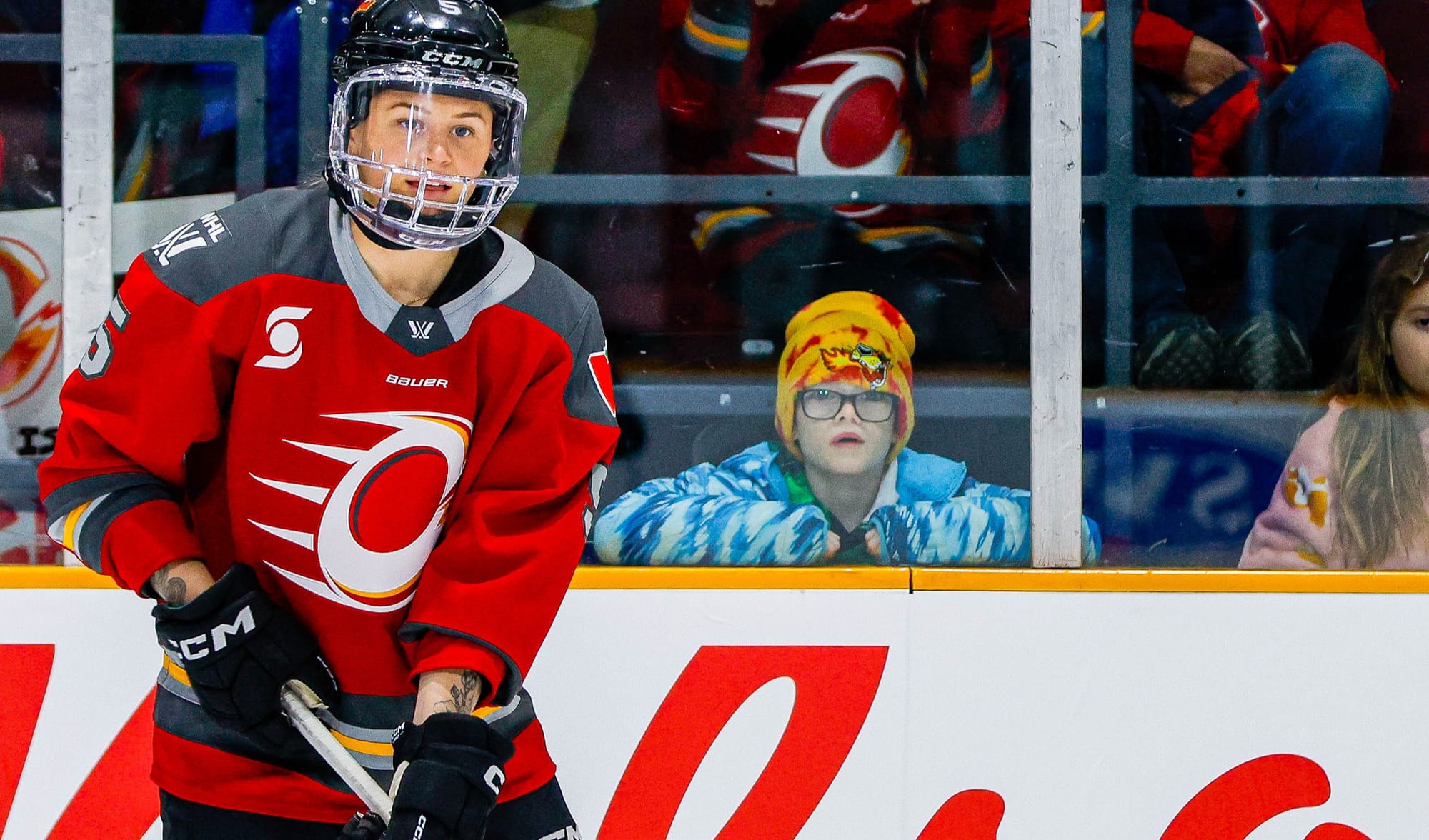
Isbell added that streamlining the process of having a pool of players to pick out of instead of requiring paperwork would be a good first step to make changes to the reserve system, but she emphasizes that it's the only fault she has with the reserve system right now.
“I think we're well taken care of. It's more just logistically. If you are to get in the lineup, it is a process, just minimize… that process,” she explained. “As far as everything goes: I practice every day, I train every day and I eat the same food as everybody. I think we're treated very equally.”





Comments ()